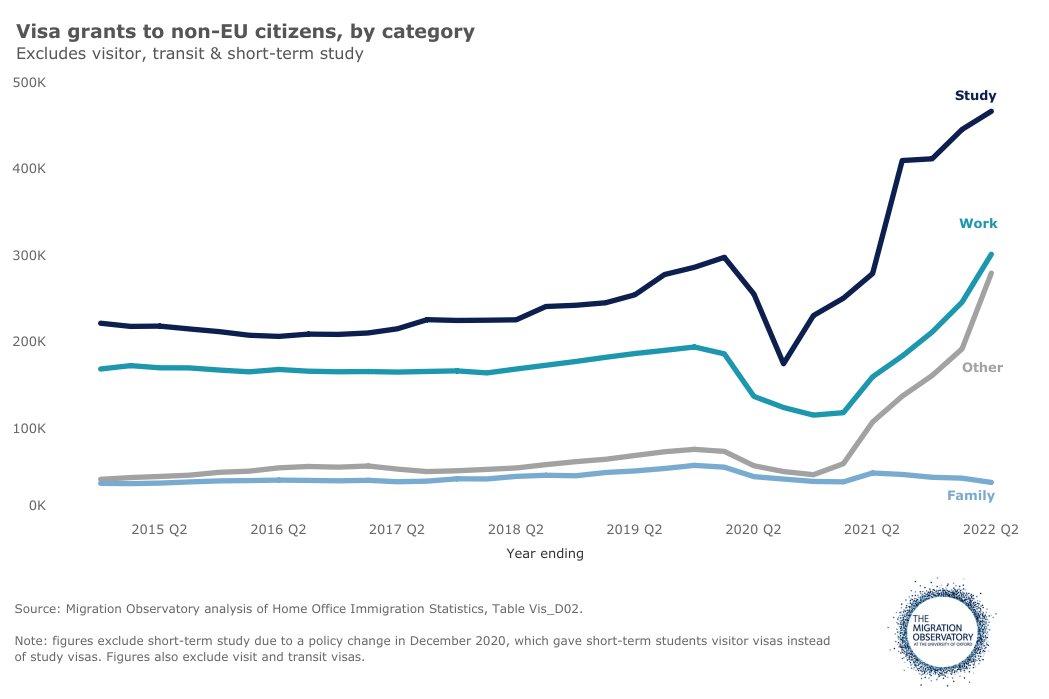New monthly visa stats came out today and here are our key takeaways
The tighter immigration rules under the previous government are having an impact: visa applications have dropped sharply, especially from health & care workers 

Most international students cannot bring dependants anymore, and study visa applications from main applicants are down too – 11% drop in 2024–25 vs the year before. The decline in the number of students could have serious financial implications for some UK universities. 

Even with salary thresholds rising from £26,200 to £38,700, work visa applications outside the health and care sectors haven’t declined as much as expected. It appears many employers are simply choosing to pay more. 

After an initial drop due to the new income threshold, family visa applications are rising again. According to the Home Office, this increase is not driven by partner visas, but by a rise in refugee family reunion visas (resulting from recent increases in asylum grants) 

Overall, even with the recent drop, visa applications from non-EU citizens remain well above pre-Brexit levels. This is because high levels of immigration in the past continue to have effects today – for example, a rise in asylum is then led by a rise in family reunion
• • •
Missing some Tweet in this thread? You can try to
force a refresh











